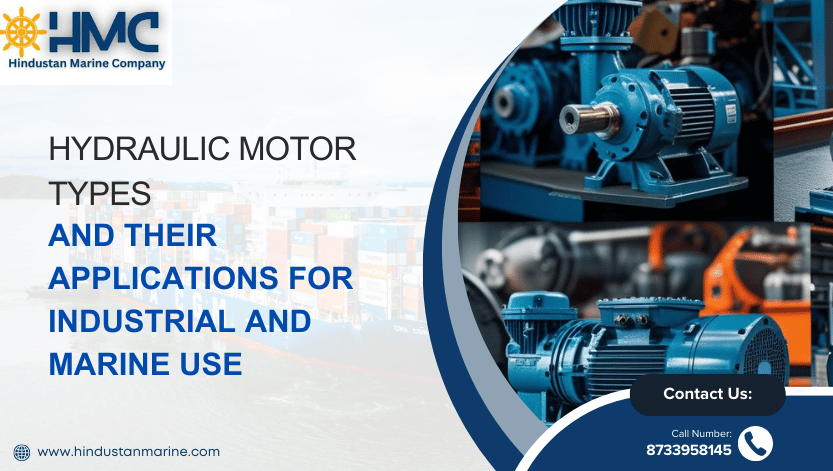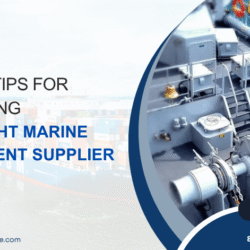
Hydraulic Motor Types and Their Applications for Industrial and Marine Use
In the world of fluid power, hydraulic motors are the silent workhorses behind powerful machines. From offshore vessels to factory conveyors, they convert hydraulic energy into mechanical power. But not all hydraulic motors are the same. In fact, there are several hydraulic motor types, each designed for specific functions and operating environments.
In this blog, we break down the main types of hydraulic motors, their features, and real-life applications — especially relevant for industries in India. Whether you’re upgrading your system or just learning the basics, this guide simplifies complex engineering into plain language.
For those looking for high-performance options, explore our full range of Hydraulic Motor Equipments built for marine and industrial reliability.
What Is a Hydraulic Motor?
A hydraulic motor is a mechanical actuator that converts hydraulic fluid pressure into rotational force or torque. It’s the counterpart to a hydraulic pump, working in reverse — while a pump pushes fluid, a motor receives it and drives machinery.
Hydraulic motors are known for their:
- High torque output
- Reliability under load
- Compact size for heavy-duty tasks
- Smooth operation under fluctuating loads
They’re used in applications like ship winches, industrial presses, agricultural equipment, and construction machinery.
Main Hydraulic Motor Types
According to insights from Panagon Systems and Hydraulicsonline, the most commonly used hydraulic motor types include:
1. Gear Motors
How it works:
Gear motors use interlocking gears to transfer hydraulic energy into motion. There are two variants — external gear motors and internal gear motors.
Pros:
- Simple design
- Cost-effective
- Good for medium to high speeds
Common uses:
- Agricultural machinery
- Light industrial conveyors
2. Vane Motors
How it works:
Vane motors use a slotted rotor with extendable vanes to trap and move fluid.
Pros:
- Smooth and quiet operation
- Moderate torque and speed range
- More efficient than gear motors
Common uses:
- Injection molding machines
- Marine cranes
3. Piston Motors (Axial and Radial)
How it works:
These motors use pistons moving in a circular cylinder block, either aligned with the shaft (axial) or perpendicular (radial).
Pros:
- High efficiency
- High torque at low speeds
- Suitable for heavy-duty and high-pressure operations
Common uses:
- Offshore drilling rigs
- Excavators
- Large winches
4. Gerotor/Geroler Motors
How it works:
Gerotor motors have an inner and outer rotor, creating sealed chambers that move fluid in a circular path.
Pros:
- Compact design
- Low speed, high torque
- Ideal for space-limited operations
Common uses:
- Wheel drives
- Marine propulsion assists
- Mobile machinery
How to Choose the Right Hydraulic Motor
Per Parker’s guidelines, selecting the right motor depends on:
- Load type and torque requirement
- Speed range and efficiency expectations
- Duty cycle (continuous or intermittent)
- Environmental conditions (marine, dusty, wet)
- Fluid type and viscosity
Also, ensure compatibility with Marine Hydraulics Equipments for long-term performance in coastal and offshore conditions.
Hydraulic Motor Applications in India
India’s growing sectors like:
- Ports and shipping (winches, lifts, steering systems)
- Construction (crushers, loaders, boring machines)
- Agriculture (harvesters, tillers)
- Manufacturing (machine presses, material handling)
are actively integrating hydraulic systems for reliable and rugged performance.
For instance, Indian ports like Kandla and Mumbai Port Trust use high-torque radial piston motors in cargo winches, helping move heavy loads with precision.
Trends and Future of Hydraulic Motors
As per industry estimates, the global hydraulic motors market is expected to reach USD 14.2 billion by 2030, with significant growth from Asia-Pacific countries, including India.
Emerging trends include:
- Electro-hydraulic hybrids for energy efficiency
- Smart sensors for performance monitoring
- Eco-friendly hydraulic fluids for sustainability
Advantages of Using Hydraulic Motors
- High power-to-weight ratio
- Ability to stall without damage
- Compactness and durability
- Seamless integration with automation systems
- Excellent control at low speeds
Conclusion
Understanding hydraulic motor types helps engineers, buyers, and technicians make better decisions. From gear motors for basic applications to piston motors for demanding tasks, each type serves a unique purpose. For Indian industries focusing on reliability, efficiency, and space optimization — hydraulic motors are a dependable choice.
Stay ahead by choosing motors that match your application’s demands — and explore India’s growing market of smart, durable hydraulic systems.
5 FAQs on Hydraulic Motor Types
- What are the four main types of hydraulic motors?
The four main types are gear motors, vane motors, piston motors, and gerotor motors. - Which hydraulic motor is best for high torque applications?
Piston motors (especially radial type) are ideal for high torque, low-speed applications. - Are hydraulic motors better than electric motors?
In heavy-duty applications requiring torque and ruggedness, hydraulic motors often outperform electric ones. - What is the lifespan of a hydraulic motor?
With proper maintenance, hydraulic motors can last 5–10 years or longer, depending on usage and environment. - Can hydraulic motors be used underwater?
Yes, specially sealed hydraulic motors are used in underwater or marine applications like ship steering and submersible equipment.





 Fast Delivery
Fast Delivery Easy Returns
Easy Returns Instant Quote
Instant Quote Product Demo
Product Demo